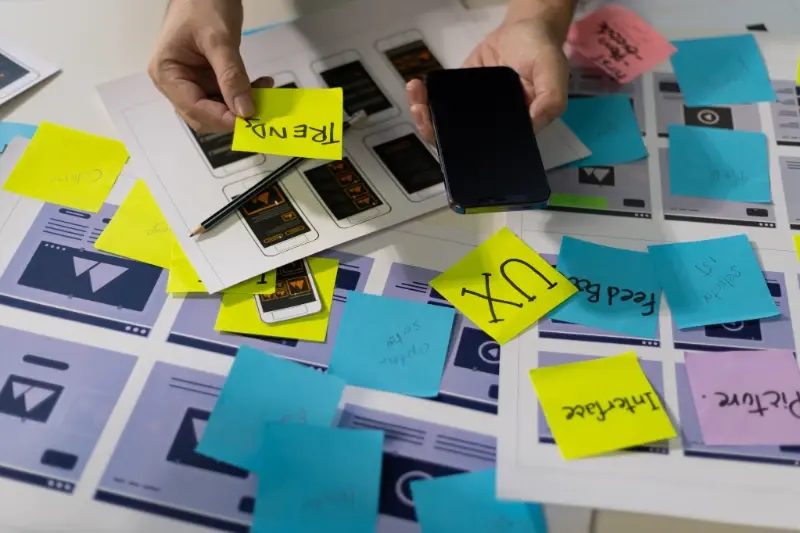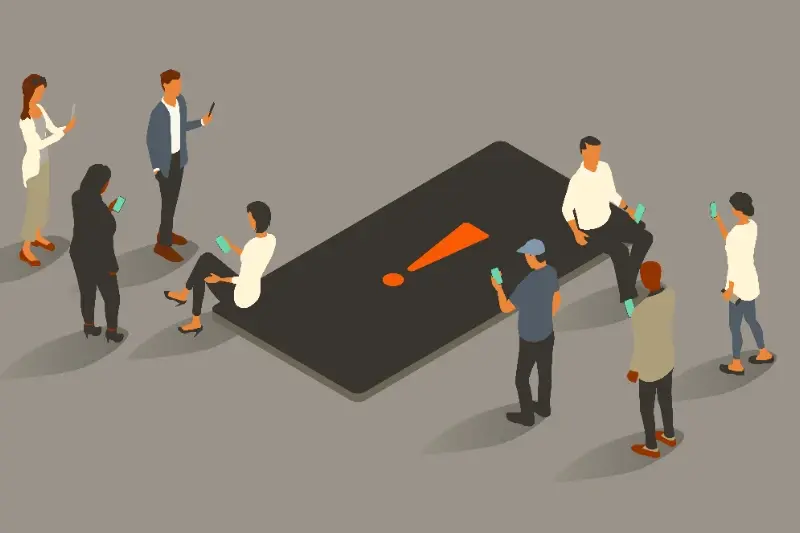Creating Memorable User Experiences on a Startup Budget
You've got a brilliant app idea that could genuinely make people's lives better, but your bank account is looking about as empty as a ghost town. Sound familiar? Most startup founders face this exact dilemma when it comes to UX design—they know good user experience is what separates successful apps from the digital graveyard, but they're working with budgets that would make a student wince.
The good news is that creating memorable user experiences doesn't require a Silicon Valley budget or a team of fifty designers. Some of the most beloved apps started with tiny teams and even tinier budgets. What they lacked in resources, they made up for with smart thinking, creative problem-solving, and a laser focus on what really matters to users.
Great UX isn't about having unlimited resources—it's about making the right decisions with the resources you have
This guide will show you exactly how to build outstanding user experiences without breaking the bank. We'll cover practical strategies for research, design, testing, and team building that won't drain your startup funds. You'll learn which corners you can safely cut and which investments are absolutely worth making. Most importantly, you'll discover that budget constraints can actually force you to make better design decisions—ones that focus on user needs rather than flashy features.
Understanding the startup UX challenge
Here's the thing about startups—they face a unique problem that established companies don't have to worry about. You need to create an experience that's as good as what users get from companies with massive budgets and years of refinement, but you're working with limited resources and tight deadlines. I've worked with countless startups over the years, and this challenge comes up in every single conversation.
The reality is that users don't care about your budget constraints. They'll compare your app to the best ones on their phone, whether that's Instagram, Spotify, or their banking app. That's your competition, not other startups. This creates a real tension between what you want to achieve and what you can actually afford.
Common UX challenges startups face
Most startups I work with are dealing with the same core issues:
- Limited budget for user research and testing
- Small teams wearing multiple hats
- Pressure to launch quickly
- Lack of dedicated UX expertise
- Difficulty prioritising features
- No established design system or processes
The good news? These challenges aren't insurmountable. You just need to be smart about how you approach them—and that's exactly what we'll cover in the rest of this post.
Setting realistic design goals within budget limits
I've worked with countless startups over the years, and there's one mistake I see time and again—trying to build everything at once. When you're working with budget constraints, the temptation is to cut corners everywhere rather than focusing on what really matters. This approach usually backfires spectacularly.
The secret to cost-effective design isn't about doing everything cheaply; it's about doing the right things well. Start by identifying your core user journey—the one path through your app that delivers the most value. Maybe it's signing up and completing their first task, or perhaps it's making their first purchase. Whatever it is, that's where your UX design budget should go first.
Write down your three most important user actions and allocate 70% of your design budget to perfecting these experiences. The remaining 30% can cover everything else.
Prioritising features that matter most
When working within startup UX limitations, you need to be ruthless about what makes the cut. I always tell clients to think in terms of 'must-have', 'nice-to-have', and 'maybe later'. Your design efficiency improves dramatically when you focus on the essentials first.
- Must-have: Core functionality that your app cannot work without
- Nice-to-have: Features that improve the experience but aren't deal-breakers
- Maybe later: Everything else that sounds good but isn't proven necessary
Your user experience strategy should revolve around nailing the must-haves before you even think about the nice-to-haves. Trust me, a simple app that works brilliantly will always beat a complex one that's half-baked.
Building your core UX team without breaking the bank
Right, let's talk about building a UX team when you're watching every penny. I've worked with countless startups over the years and the biggest mistake I see is trying to hire a full UX team from day one—it's just not realistic and frankly, not necessary.
Start with one solid UX generalist who can wear multiple hats. Look for someone who can do user research, create wireframes, and understand basic visual design principles. You don't need three separate specialists at this stage; you need someone who can move fast and adapt quickly.
Smart hiring strategies for startups
Consider these cost-effective approaches when building your team:
- Hire junior designers with potential rather than expensive seniors
- Use freelancers for specific projects like user research or visual design
- Partner with design students who need portfolio work
- Look for developers with strong design sense who can bridge both worlds
- Consider remote talent to access wider skill pools at lower costs
The key is finding people who are hungry to learn and grow with your company. Junior designers often bring fresh perspectives and aren't set in their ways—plus they're usually thrilled to work on something meaningful rather than corporate redesigns.
Remember, you can always scale up your team as revenue grows. Starting lean doesn't mean starting without talent; it means being smart about where you invest your limited resources.
Smart research methods that don't cost a fortune
User research doesn't need to drain your startup budget—I've seen countless teams gather brilliant insights without spending thousands on fancy research agencies. The key is being creative with your approach whilst staying focused on what really matters for your UX design strategy.
Start with your existing network; friends, family, and colleagues can provide valuable feedback during early stages. Yes, they might be biased, but they're also free and available right now. Social media groups and online communities related to your target market are goldmines for understanding user pain points and preferences.
Guerrilla research techniques
Coffee shop interviews, online surveys through free tools, and even observing people in public spaces can reveal user behaviour patterns. I've watched startup founders learn more from a two-hour session at a local café than from expensive focus groups.
The best insights often come from the most unexpected conversations with real users in their natural environment
Don't overlook existing data sources either. Analytics from your website, customer support tickets, and competitor reviews contain user insights that cost nothing but time to analyse. Remote user testing tools offer affordable plans that let you watch real users interact with your designs—this direct feedback is invaluable for cost-effective design decisions that actually improve user experience.
Design tools and resources for cash-strapped startups
Right, let's talk about the elephant in the room—design tools cost money, and when you're bootstrapping a startup, every pound counts. The good news? You don't need to spend thousands on fancy software to create brilliant user experiences.
Figma has become my go-to recommendation for startups because it's free for small teams and works brilliantly in the browser. No massive downloads, no licensing headaches. Canva might seem basic, but it's perfect for creating quick mockups and marketing materials when you're wearing multiple hats. For prototyping, Marvel and InVision offer free tiers that'll get you through those early validation stages.
Free resources that don't look cheap
Here's where smart startups shine—they know where to find quality without the price tag:
- Unsplash and Pexels for stunning photography
- Google Fonts for typography that doesn't scream "budget project"
- Feather Icons for clean, consistent iconography
- Coolors.co for generating professional colour palettes
- UI8 and Dribbble for inspiration (not copying!)
The trick isn't about having the most expensive tools—it's about knowing how to use the right ones effectively. I've seen startups create award-winning apps using nothing but free tools and a solid understanding of their users' needs.
Testing and validation on a shoestring budget
Testing doesn't have to drain your startup budget—you just need to be clever about it. I've worked with countless startups who think they need expensive usability labs and fancy equipment to validate their UX design decisions. The truth is, some of the most valuable insights come from simple, low-cost testing methods that anyone can implement.
Start with guerrilla testing. Find your target users in coffee shops, libraries, or anywhere they naturally spend time. Offer them a free coffee in exchange for five minutes of their time to test your prototype. You'll be surprised how willing people are to help when you approach them politely and explain what you're doing.
Budget-friendly testing methods
- Remote unmoderated testing using tools like Maze or UserTesting's basic plans
- Friends and family testing (but only for initial feedback, not final validation)
- Social media polls and questions to gauge user preferences
- Free prototype testing through design communities
- A/B testing different versions with real users using free analytics tools
The key is testing early and often with small groups. Five users will reveal most usability problems—you don't need hundreds of participants for meaningful insights that improve your user experience strategy.
Record testing sessions on your phone rather than investing in expensive recording equipment. The audio quality might not be perfect, but you'll capture the essential feedback you need to make informed design decisions.
Scaling your UX efforts as you grow
Right, so you've made it through the early stages with your scrappy UX approach and things are starting to pick up. Your user base is growing, you're getting more feedback, and—here's the tricky bit—you need to decide how to expand your UX capabilities without going mad with spending.
The first thing I tell clients at this stage is don't rush to hire a full design team straight away. You'd be surprised how much you can achieve by bringing in one solid UX generalist who can handle both research and design work. Look for someone who's comfortable wearing multiple hats and isn't afraid to get their hands dirty with user testing, wireframing, and working closely with developers.
Building systematic processes
Once you have that extra pair of hands, start building repeatable processes. Create templates for user research, establish regular testing schedules, and document your design decisions. This isn't about bureaucracy—it's about making sure you don't lose the good habits you've developed as you get busier.
Investing in the right tools
Now's the time to upgrade from those free tools you've been using. A proper design system tool and user testing platform will save you hours of work and help maintain consistency across your growing product. The investment pays for itself quickly when you're not redesigning the same components over and over again.
Remember, this is also when you might want to consider implementing customer empathy tools to better understand your growing user base and identify issues users might not be telling you about.
Conclusion
Creating memorable user experiences on a startup budget isn't just possible—it's happening every day. I've watched countless startups prove that brilliant UX design doesn't require unlimited funding; it requires smart thinking, strategic planning, and knowing where to focus your limited resources.
The most successful startups I've worked with all share one thing in common: they understand that UX design isn't about having the biggest budget, it's about making the right choices. They pick their battles carefully, invest in user research that actually matters, and build teams that can deliver results without burning through cash reserves.
Your startup's budget constraints aren't a limitation—they're a superpower that forces you to be creative, efficient, and focused on what truly matters to your users. Every penny you spend on UX design should move the needle, whether that's improving user satisfaction, reducing support tickets, or increasing conversion rates.
The tools, techniques, and strategies we've covered will serve you well as you build your product. Start small, test everything, and never forget that your users don't care about your budget—they care about whether your app solves their problems in a way that feels effortless and enjoyable.
Share this
Subscribe To Our Blog
You May Also Like
These Related Stories

The Role of User Feedback in Shaping Successful Startup Apps

Why Beautiful Apps Fail: The UX Lessons Every Founder Needs





